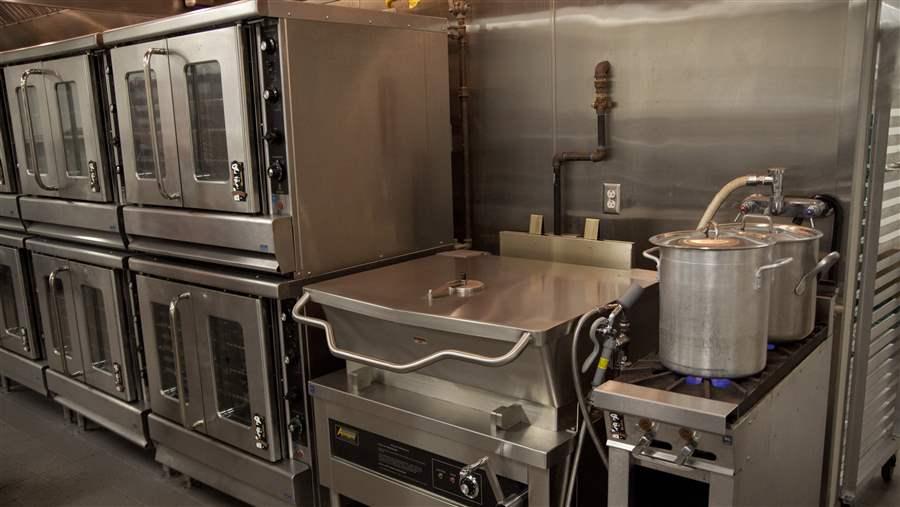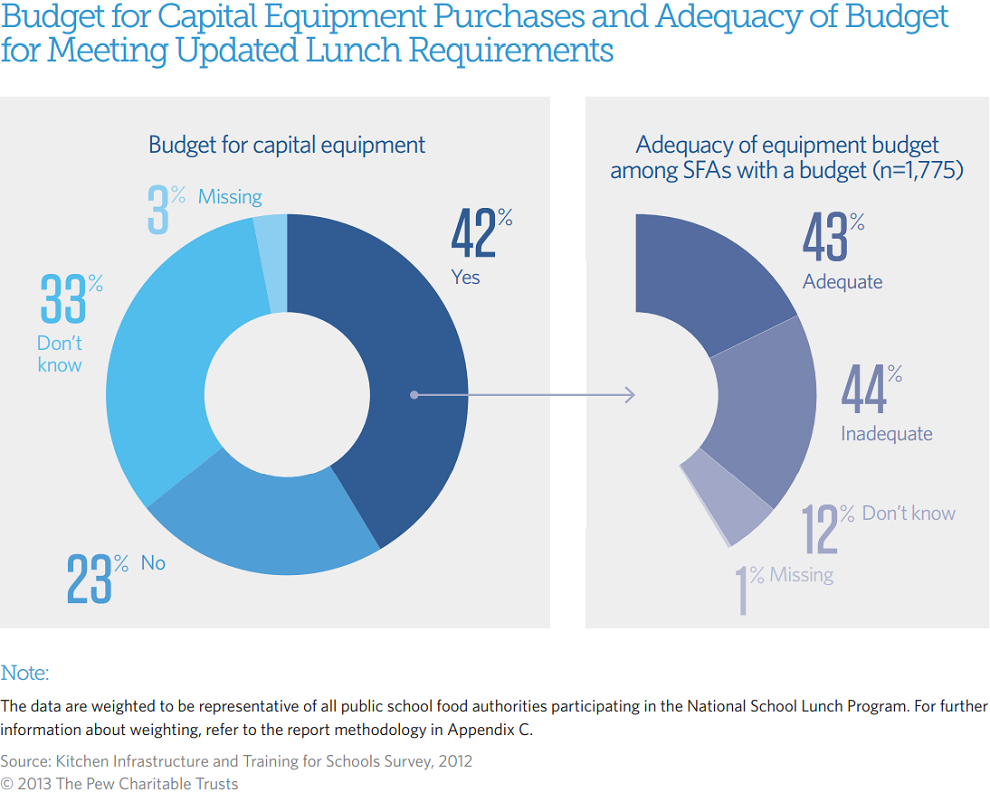Public-Private Partnerships Offer School Kitchen Grants to More Districts
Some funds designated for equipment under $5,000
 © The Pew Charitable Trusts
© The Pew Charitable TrustsUpdated kitchen equipment in Murrieta, California—such as this tilting skillet purchased with a U.S. Department of Agriculture school kitchen equipment grant—has helped the district to do more scratch cooking.
At the Super Bowl 50 Media Center on Feb. 6, Agriculture Secretary Tom Vilsack was joined by leaders of the National Football League and Fuel Up to Play 60 to announce the availability of grants for school kitchen and cafeteria improvements. The U.S. Department of Agriculture will distribute $30 million to state child nutrition agencies, which will award funds to schools on a competitive basis. Separately, Fuel Up to Play 60, a school nutrition and physical activity program, will provide $5 million in grants directly to districts that apply through the organization’s website.
These public and private resources will address a common problem for school meal programs: 88 percent of school districts need additional kitchen equipment to help them prepare meals that meet the National School Lunch Program’s strong nutrition standards. However, as the figure below shows, only 42 percent have budgets for equipment purchases, and of those, less than half say the resources are adequate to cover their needs. Meal programs serving fewer than 1,000 students and those in rural areas are significantly less likely to have budgets for equipment upgrades and replacement than those in large or urban districts.

Funding will meet a range of school kitchen equipment needs
The estimated per-school cost to meet equipment needs is more than $68,000, on average, but many districts say their most critical needs are items with relatively modest price tags, particularly large-capacity food processors, serving utensils, and knife sets with cutting boards. USDA’s equipment grants are instrumental for districts that need more expensive kitchen upgrades, such as new commercial ovens, steamers, and freezers, but are generally restricted to a single item valued at or above $5,000. The Fuel Up to Play 60 grants will help to fill the gap between these needs by supporting purchases of one or more pieces of equipment totaling up to $5,000.
While the Fuel Up to Play 60 funds are earmarked for less-expensive but much-needed purchases, the USDA grants are designated for large-scale upgrades costing $5,000 or more. Making cafeterias more inviting places for students is a frequent goal of larger renovations. Reconfigured and expanded serving lines, for instance, can encourage students to select healthier options and ensure that they spend more of their lunch period eating rather than waiting in line.
Together, these investments in small and large equipment will enable schools to offer healthier and more appetizing menus with freshly baked, roasted, or steamed dishes instead of fried or reheated ones. They also will help schools to employ cost-saving procurement practices. For example, nearly 40 percent of meal programs need a walk-in refrigerator, which typically costs about $29,000 but allows schools to take advantage of economies of scale by buying fruits, vegetables, and other ingredients in larger quantities at lower cost.
A reconfigured lunch line has paid off in a Virginia school district. “We reorganized our lunch line so that now every kid goes through the salad bar first to fill up their plate with fruits and vegetables,” said Rodney Taylor, director of food and nutrition services for Fairfax County Public Schools in Virginia. “The salad bars are easy for the kids to use and create an opportunity for our staff to engage them in nutrition education.”
Jessica Donze Black directs the Kids’ Safe and Healthful Foods Project.








